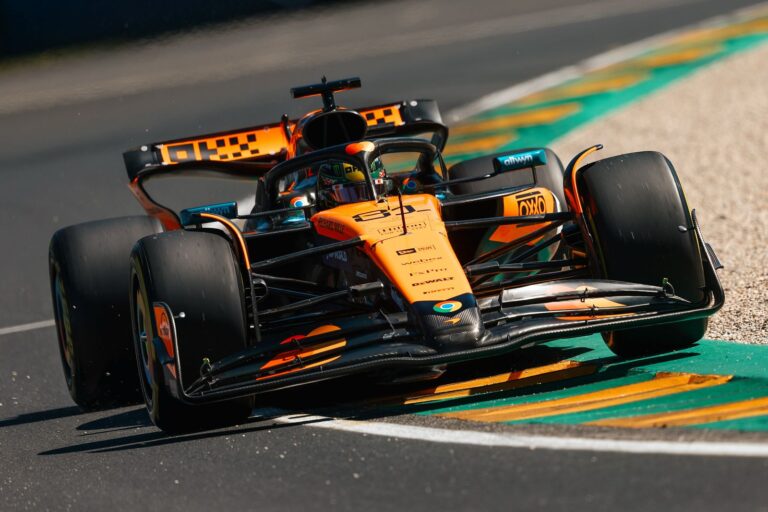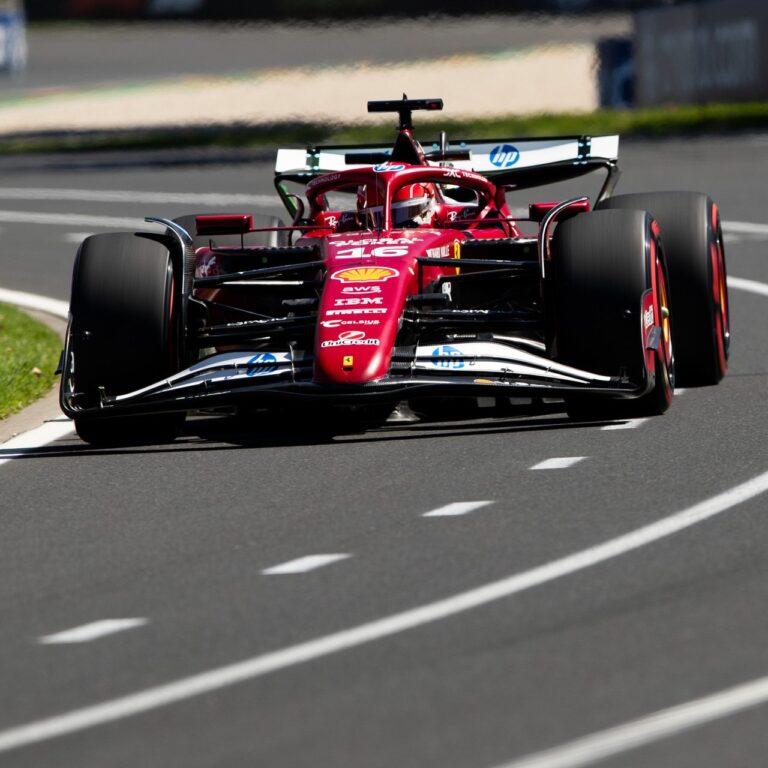The first day of free practice in Australia is in the books, and while teams have yet to fully reveal their hands, initial data offers valuable insights into the competitive landscape. The early signs suggest a continuation of last year’s trends, with McLaren and Ferrari locked in a tight battle—just as pre-season testing had hinted.
McLaren entered the Melbourne weekend as the team to beat, largely because they appeared to have a strong grasp of their car’s baseline from the outset. Meanwhile, Ferrari spent the post-test period fine-tuning their SF-25, and the early results are encouraging, especially for Charles Leclerc, who looked immediately comfortable behind the wheel.

Ferrari’s Strengths in Low-Speed Sections
Conditions in Melbourne differed significantly from those in Bahrain. The higher temperatures made tire management a more complex challenge, particularly with the delicate C5 compound. While Mercedes showed consistent performance on harder tires, they struggled for outright pace on softer compounds.
The Ferrari-McLaren battle, however, is particularly intriguing due to the contrasting characteristics of their cars. The SF-25 exhibits some familiar weaknesses from last season, particularly in high-speed direction changes, such as Turns 9 and 10, where it trails the McLaren by around 6 km/h. This speed deficit not only costs Ferrari time through the corners but also impacts acceleration onto the following straight.
Aerodynamic choices have played a key role in these differences. Ferrari opted for a high-downforce rear wing setup similar to their testing configuration, while McLaren initially ran a lower-drag setup before adjusting to a more balanced approach. This tweak, likely made to protect rear tire wear in the heat, brought the two teams closer in top speed between FP1 and FP2. However, Ferrari’s traditionally conservative engine mappings on Fridays may have also played a role.

The Payoff: Ferrari’s Edge in Traction
Despite its high-speed limitations, the SF-25’s strengths in low-speed corners helped Ferrari compensate for the lost ground. This advantage was particularly evident in the final sector and at Turn 3, where Leclerc found enough time to top the timesheets, edging out both McLaren drivers by just over a tenth.
Interestingly, Ferrari’s advantage in the final sector wasn’t as dominant as one might expect. That’s because this sector includes both slow corners and high-speed sections like Turns 9 and 10, where McLaren regained ground. Still, the overall takeaway is positive: the SF-25 appears to have a solid operating window, particularly in traction-heavy zones.
On the McLaren side, Lando Norris seemed to be holding something in reserve, adjusting his braking points and still searching for the perfect one-lap balance. While he appears more confident in race trim, there’s room for improvement over a single flying lap.
With both teams showing clear strengths and weaknesses, the battle between Ferrari and McLaren looks set to be one of the defining rivalries of the early season.



















